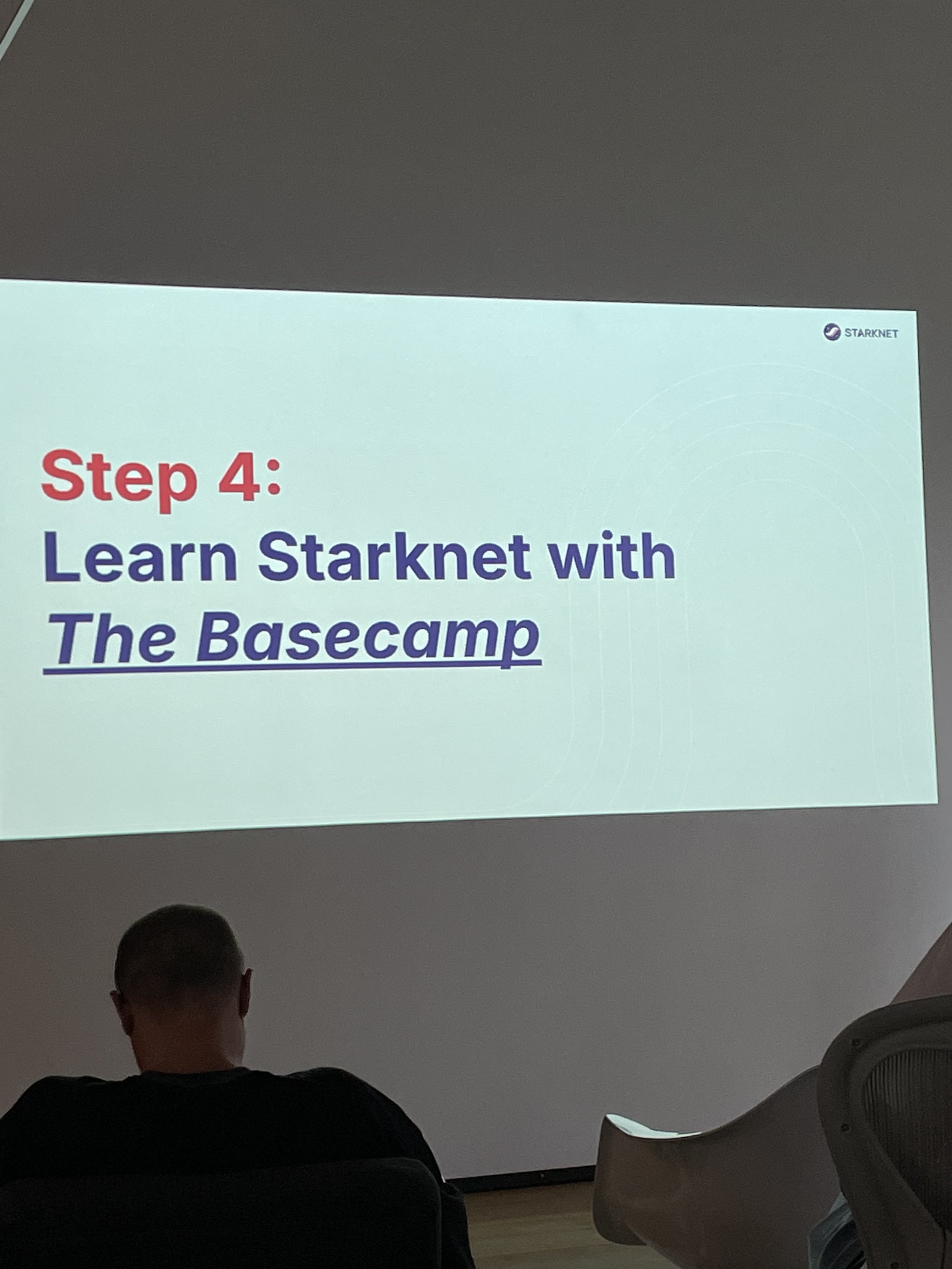What is Starknet and how does it work?
Company details
Type: Private company
Industry: Blockchain
Founded: 2018
Founders:
Eli Ben-Sasson
Uri Kolodny
Michael Riabzev
Alessandro Chiesa
Headquarters: Netanya, Israel
Products: StarkEx, Cairo, StarkNet
Company background
Starknet works as a permissionless layer-2 network, facilitating the development of decentralized applications (dApps). The platform was created by StarkWare Industries, an Israeli blockchain company founded in 2018 by Eli Ben-Sasson, Uri Kolodny, Michael Riabzev, and Alessandro Chiesa. StarkWare developed its first product StarkEx, a permissioned network catering to specific dApp requirements, which has been operational since June 2020.
StarkWare launched its first product StarkEx in 2020, a permissioned scaling solution utilizing zk-STARK technology, which also underpins Starknet. StarkEx is employed by platforms like dYdX and ImmutableX. The company aimed to create a permissionless Layer 2 solution, leading to the release of Starknet's genesis block in November 2021. The Starknet token (STRK) was later issued on the Ethereum Mainnet in November 2022, with public sales beginning in February 2024. Within five years, StarkWare became one of the best-funded projects in the industry, securing a seed round from private investors and a $12 million grant from the Ethereum Foundation, along with substantial backing from notable firms like Alameda Research, Paradigm, and Sequoia Capital.
How Starknet works
Blockchain aims for decentralized and trustless interactions, necessitating off-chain processing to be validated without relying on a centralized authority. Starknet achieves this using Scalable Transparent Arguments of Knowledge (STARK) proofs, introduced in 2018. Unlike zk-SNARKs, zk-STARKs do not require trust in a central party during their setup.
Starknet’s Layer 2 utilizes two primary components: sequencers and provers.
Sequencers: Transactions submitted to Starknet are processed by sequencers, which function like advanced Ethereum nodes. They queue transactions in a mempool, propose blocks, and include only successful transactions in these blocks. Once a block is formed, sequencers seek approval from other sequencers before sending it to the provers.
Provers: Provers further verify the validity of transactions within a block. They group and process these blocks in parallel, enhancing efficiency. During this process, they create an Execution Trace and a State Diff, detailing transaction execution steps and state changes in Starknet. An algorithm analyzes the Execution Trace to identify invalid data, utilizing a random sample of transactions for STARK proof verification.
Publishing to the Ethereum mainnet: The STARK proof and State Diff are sent back to Ethereum as a single transaction, enabling Starknet to bundle thousands of transactions efficiently. On the Ethereum network, a node unpacks this transaction to process the proof and State Diff via the Verifier smart contract. The Verifier assesses the proof's validity before handing it off to the Starknet Core smart contract. This confirms the proof's validity and updates Starknet’s state on Ethereum. The transaction is then finalized through Ethereum's standard operating procedures.
Scalability challenges in blockchain
Scalability is a persistent issue in blockchain networks, prominently affecting Ethereum. As more users engage with the network, the processing speed diminishes, and transaction fees escalate. To tackle these issues, various Ethereum scaling solutions, such as Starknet, aim to improve the efficiency and cost-effectiveness of transactions.
Layer-2 solutions
Starknet is among several layer-2 (L2) scaling solutions for Ethereum, employing zk-rollups as a popular method for enhancing transaction throughput and reducing costs. Rollups, including two main types—zk-rollups and optimistic rollups—execute a portion of computations off-chain. By batching multiple transactions together, they relieve congestion on the Ethereum mainnet, resulting in lower fees for users.
Technical innovations
While previous zk-rollups have primarily utilized zk-SNARKS technology, Starknet distinguishes itself through its implementation of zk-STARKs. This technology comprises two key elements—sequencers and provers—that work together to mathematically validate transactions, generate STARK proofs, and interact with Ethereum’s mainnet for official transaction records. Moreover, Starknet introduces its programming language, Cairo, which simplifies development for programmers.
Currency and governance
Initially, Starknet enabled transaction fees to be paid using Ethereum's native currency, ETH. However, it has since introduced its own token, STRK. The STRK token serves various purposes, including facilitating transaction fees, enabling staking, and contributing to governance decisions, thereby promoting network sustainability and growth.
Starknet features
As a validity rollup, Starknet operates on the Ethereum network by processing most transaction activities off-chain and providing proof to Ethereum. This method alleviates the workload on the Layer 1 blockchain, resulting in enhanced transaction speed and reduced costs.
Financials and growth
StarkWare Industries has garnered significant attention from investors, including prominent firms like Sequoia Capital, Paradigm, and Coatue. The company achieved a valuation of $8 billion following a $100 million Series D funding round in May 2022, reflecting a rapid increase from a previous valuation of $2 billion just six months prior.
Since its launch, Starknet has experienced considerable growth in its total value locked (TVL), which stood at $238.7 million at the time when this article was published. The STRK token plays a key role in fostering the network's expansion and overall adoption.
Conclusion
Starknet, through its technological innovations and strategic developments, represents a significant step forward in solving Ethereum's scalability challenges while enhancing the potential for dApp growth on the platform.
Further resources
Learn how to use Starknet by checking out https://www.argent.xyz/learn/how-to-use-starknet/



